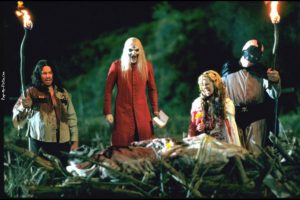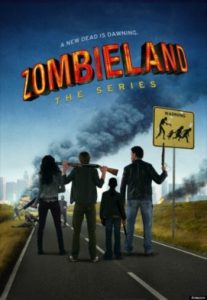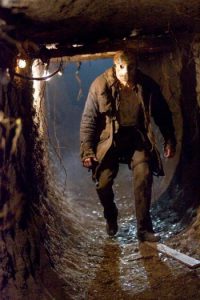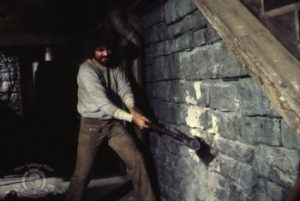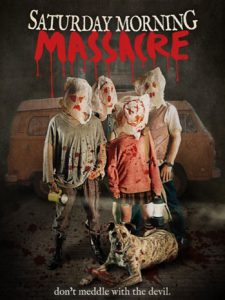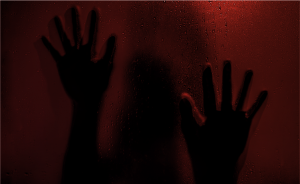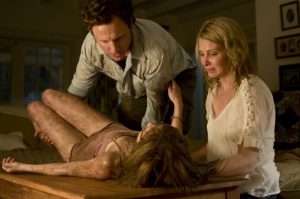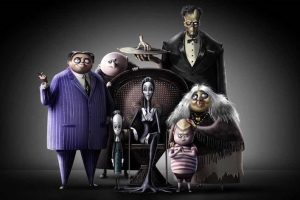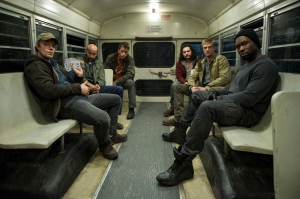The Evolution of Slasher Movies
As a society, we love violence. I mean, we LOVE violence. From the tamest swordfight on Captain Pugwash cartoons, to mincing Mogwai in Gremlins, to brutalising teenagers in Soroity Row, we cannot get enough violence as entertainment. So it makes sense then that slasher films – films where the main attraction is the extreme, unflinching, hyper-realistic violence-should be so popular. They’re all about violence, centred around death and gore, an elaborate (or not so elaborate, as the case may be) excuse for an extreme, graphic, continued, assault on the eyes.
But where did slashers evolve from? The earliest example of a piece of entertainment that focuses gleefully on graphic violence would probably be Shakespeare’s Titus Andronicus. One of the final scenes features what can only be described as an on-stage massacre, with a dash of cannibalism thrown in for good measure. It was widely panned by critics at the time, but you can bet that the audience didn’t come out raving about that amazing soliloquy. It was the violence that gained it ntoreity. Later, the Grand Guignol theatre, opened in Paris in 1897, became a synonym for the values of what would later become modern slasher films- extreme, utterly unflinching, naturalistic violence, shown entirely for entertainments sake (as opposed to as a cautionary tale), with the story almost taking a back seat to the positive ocean of gore. Although it also showed comedies, the focus was the ludricous amount of violence, and that’s what it became best known for, up until it’s closure in 1967. Later, Agatha Chrsitie’s famous whodunnnit novel (which for the sake of decency I shall refer to as And Then There Were None) featured the graphic deaths of numerous candidates- even though it was ostensibly a murder-mysetry, it certainly revelled to some extent in the creative dispatching of it’s guilty candidates, from heads smahsed in with bear clocks, to a straightforward axe in the back. This was an important development, because Christie was a respected author, and this leant the pre-slasher genre a certain amount of kudos. People were gradually coming round to the idea that violence could be entertaining.
Many films used violence as a key plot point prior to slasher films, without showing the violence on-screen. Take Psycho and the iconic shower scene- although you see a small amount of blood, you do not actually see the violence ocurring, thanks to some mind-bendingly clever direction from Hitchcock. Violence was also heavily sanitised- for many years, if a character was shot in a movie, they would grab their chest and keel over, and slasher films brought with them the idea that violence should be realistic. So what was the first slasher film?
Well, I’m going to put my money where my mouth is and say Blood Feast. It’s a film that features continuos violence, graphic gore, and a plot based entirely around a mounting pile of corpses. Released in 1963, it was panned by critics, to which the makers responded that it certainly wasn’t to be taken seriously. The film heralded the steady increase of proto-slasher films during the 1960s, with the release of 2000 Maniacs!, Twisted Nerve, and Chamber of Horrors.
The first film that is a recognisable member of the modern stalk-and-slash family is probably Black Christmas, released in 1974. The following years were the golden period for slasher films-with horror movie colossus in their cinematic gestation sending the popularity of the genre into the stratosphere with their movies (such as John Carpenter’s Halloween), to virtual newcomers like Sean. S. Cunningham kick-starting the sub-genre of dead teenager movies with Friday the 13th, to old hands at the genre dabbling gleefully in the trend for uber-violence, like Dario Argento’s Profondo Rosso. During this time, numerous slasher franchises were launched, as the audience became hungrier for more gore; similairly, certain antagonists became highly recognisable (such as Freddy Krueger, Michael Myers, Leatherface, et al), the households names of horror.
But all good things must come to an end, and by the late 80s, the audience had become somewhat disenchanted with the lashings of gore, and the film industry began to drift towards more slice-of-life offerings. There was still a steady trickle of slashers released, but few gaining the hype or the audience of the genre’s heyday. Notable exceptions include the Final Destination franchise (a personal favourite) with it’s hyper-realistic violence, where every character is a bag of blood and guts just waiting to be exploded by a pane of glass, and Scream, which gained notoreity through it’s affectionate-but-sharp parody of the classic slasher films. The horror genre moved towards psychological chillers, most slashers gaining a straight-to-video release.
Then-BAM!-Eli Roth, Rob Zombie, and James Wan rolled up with a whole new offering- gorenography. Violence so incredibly extreme it had audiences flocking to cinemas to be appalled, with Saw and Hostel launching a new extremist wave of slasher. Reboots of popular franchises like The Texas Chainsaw Massacre captured new generations of fans, and foreign-language films, like Inside, and Suicide Club picked up on the trend, proffering well-regarded slashers. We’ve entered a second wave of gore, with audiences hungry for more violence, more absurd premises, more iconic villains. And we can only hope that we’ll get it.




![Best Indie Horror Films [ Part 2 ]](https://www.horror-movies.ca/wp-content/uploads/2021/04/absentia-610x343-2-300x169.jpg)
